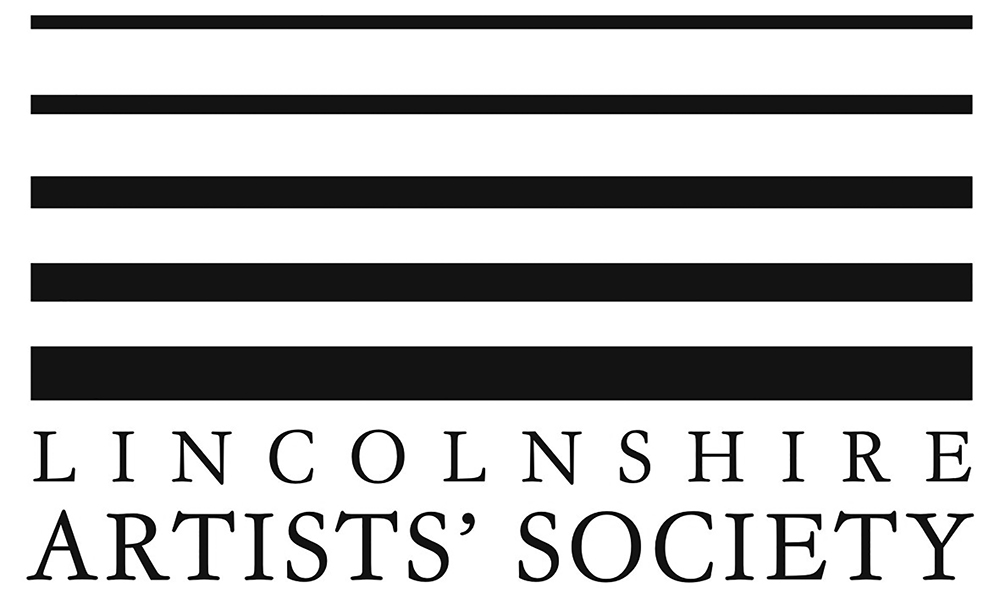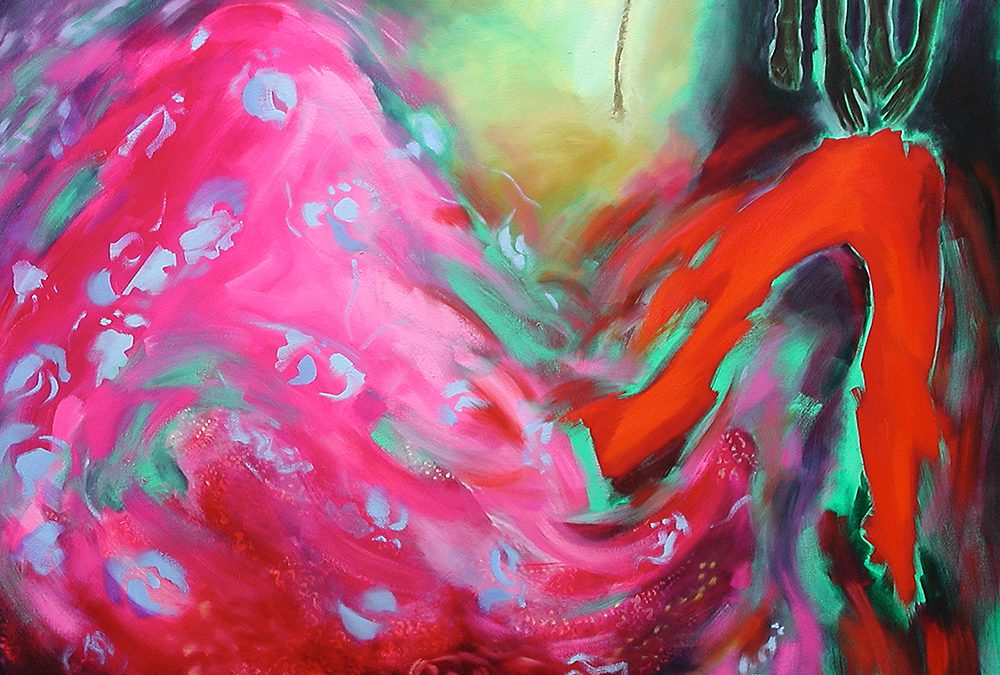Medina Hammad
When I was eighteen I found myself at art college and as soon as I stepped into a studio it felt right.
Over the next thirty nine years I moved from painting to sculpture, to collage and drawing and finally back to painting again.
After college I became very interested in art which engaged with autobiographical intentions.
My multicultural background flavoured my pictures with many exotic qualities and components.
I also, have always had a love of narrative and was drawn as a child, towards picture books, especially those concerned with mythology and folklore.
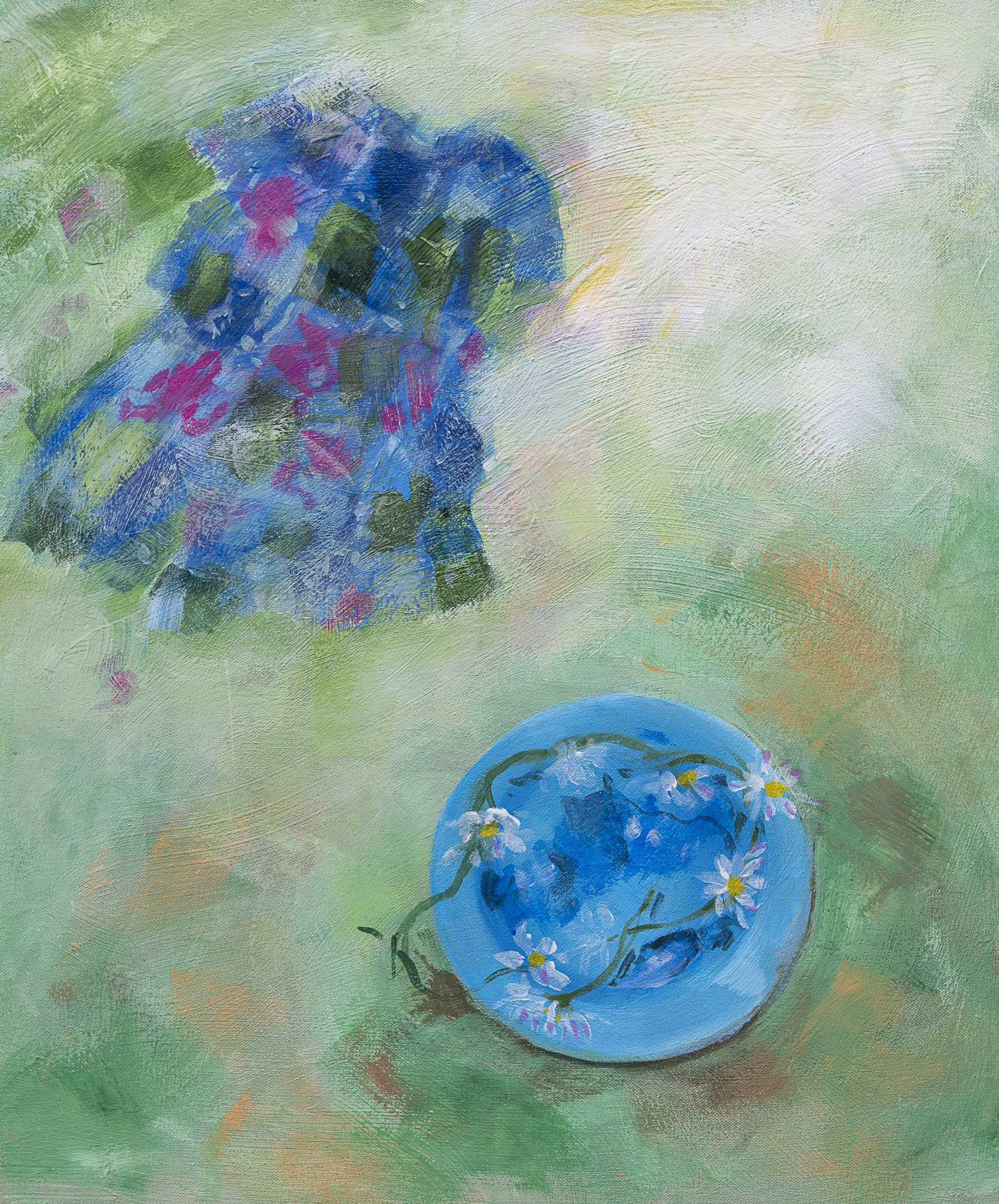
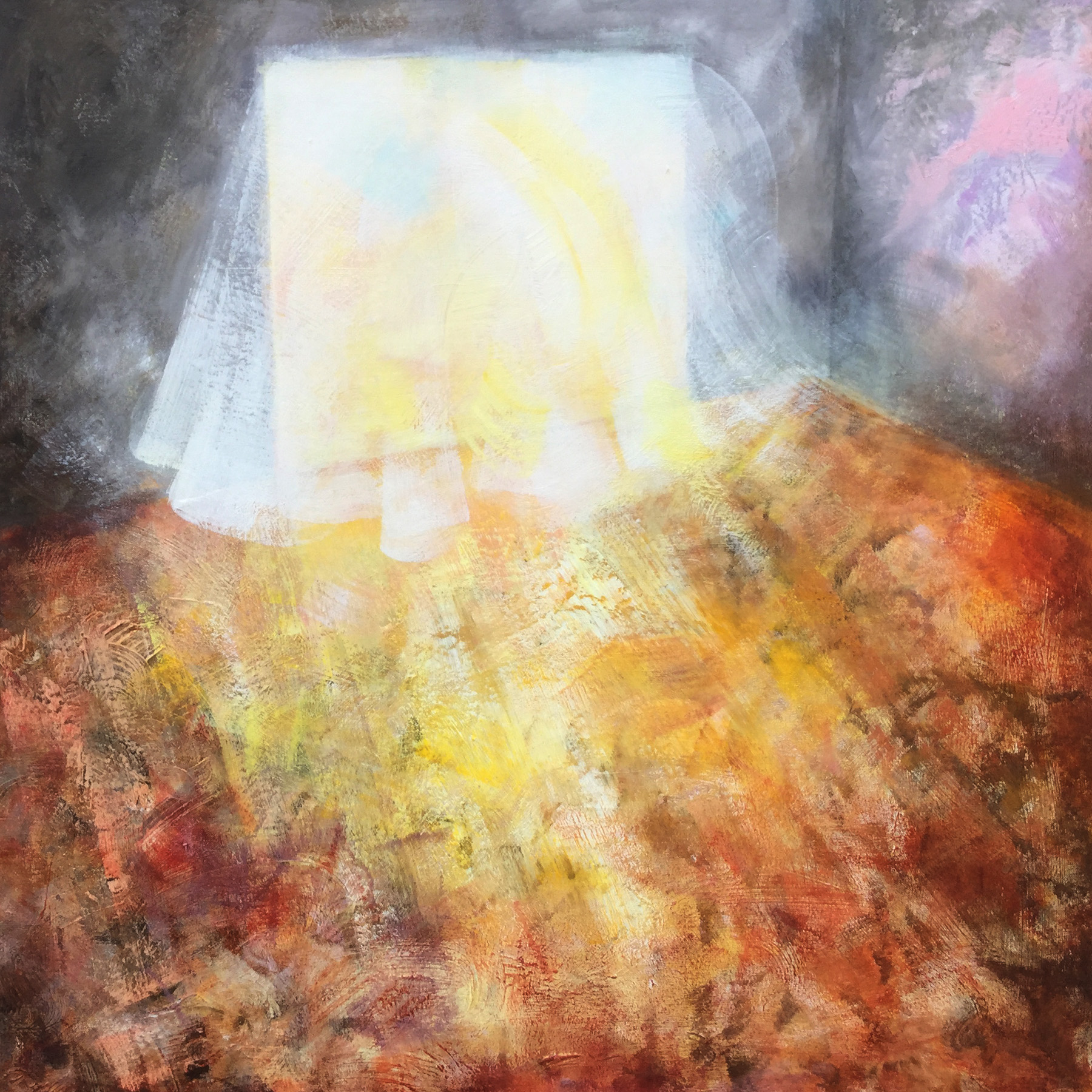
I worked in education for a long time and during this period my work ebbed and flowed. I am now at a stage when I have room for a renewed and very productive focus. Late middle age is incredibly valuable. I feel I know more but am also aware of knowing so little! I still learn something every day.
My work always changes. I never have to engineer this – it just happens. Each of life’s stages makes an impact, sometimes gently, sometimes with vigour and force. The transformation can involve media, or composition, scale and content.
I think my main subject matter stays the same – it’s how I choose to reveal or stage it that alters.
To illustrate this, I used to say to students – “ Go to a well illustrated book about a great, dead artist. Their core concerns are there throughout their lives, but the shape of the work changes.”
My recent output is largely about my late mother, whom I loved very much. The pieces have occurred some years after her death.
I think you need time to process big events, before you try to reflect creatively on them and really try to do them justice.
Many of these works are subtitled ‘ Mourning Study’. Bereavement travels with us down the years and alters it’s heft and colour. It develops as we do.
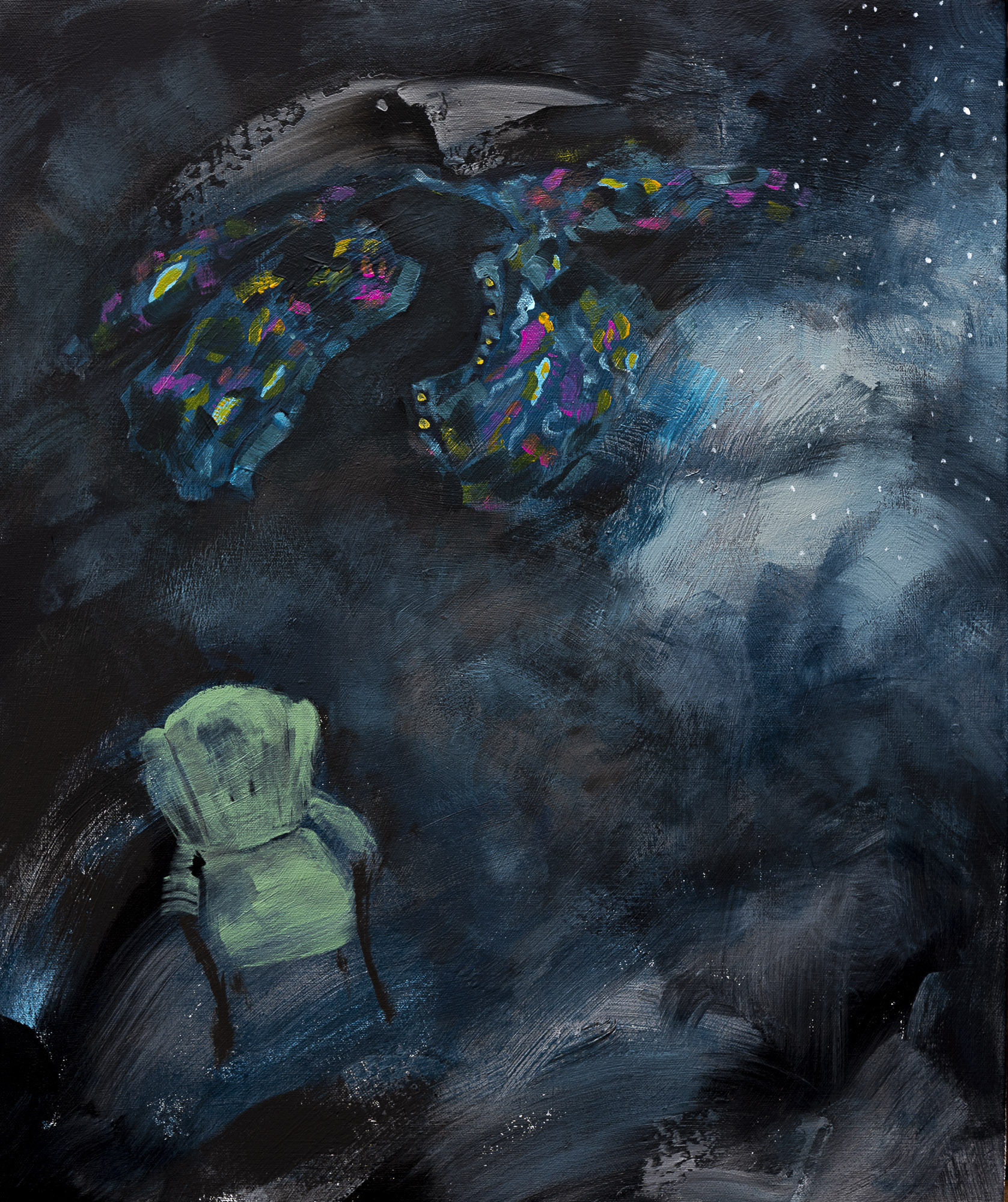
I read a beautiful book about loss by the psychologist Darian Leader titled ‘ The New Black’. He writes about “the registration of loss”, particularly in relation to dreams and he references Freud’s ideas about them constituting a very necessary emotional ‘work process’.
He also feels that we can learn from formal mourning processes in culture and discusses Victorian approaches, for example. As an artist, I have always tried to register my thoughts and feelings about major experiences in my imagery. People often comment on a dreamlike quality in my work. I think this is because memory has always fascinated me – principally how focus changes, how things shift in and out.
Physically, anything can happen in my work. Objects or people are not rooted to the spot.
Time collides. I enjoy this freedom.
The spirit of my work is cathartic. How do we make sense of the world and our experiences?
I try to communicate the nature of human reflection, whether it involves parrots masquerading as art students or my lovely Mum’s little cactus, that just blooms when it feels like it and never fails to give me hope.
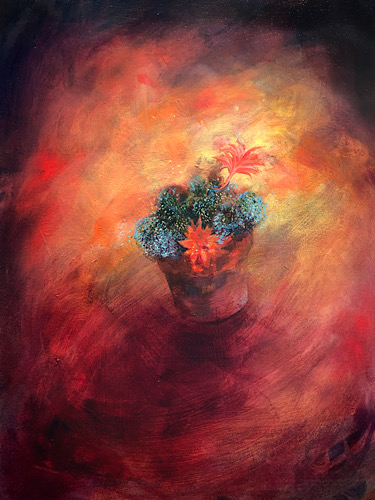
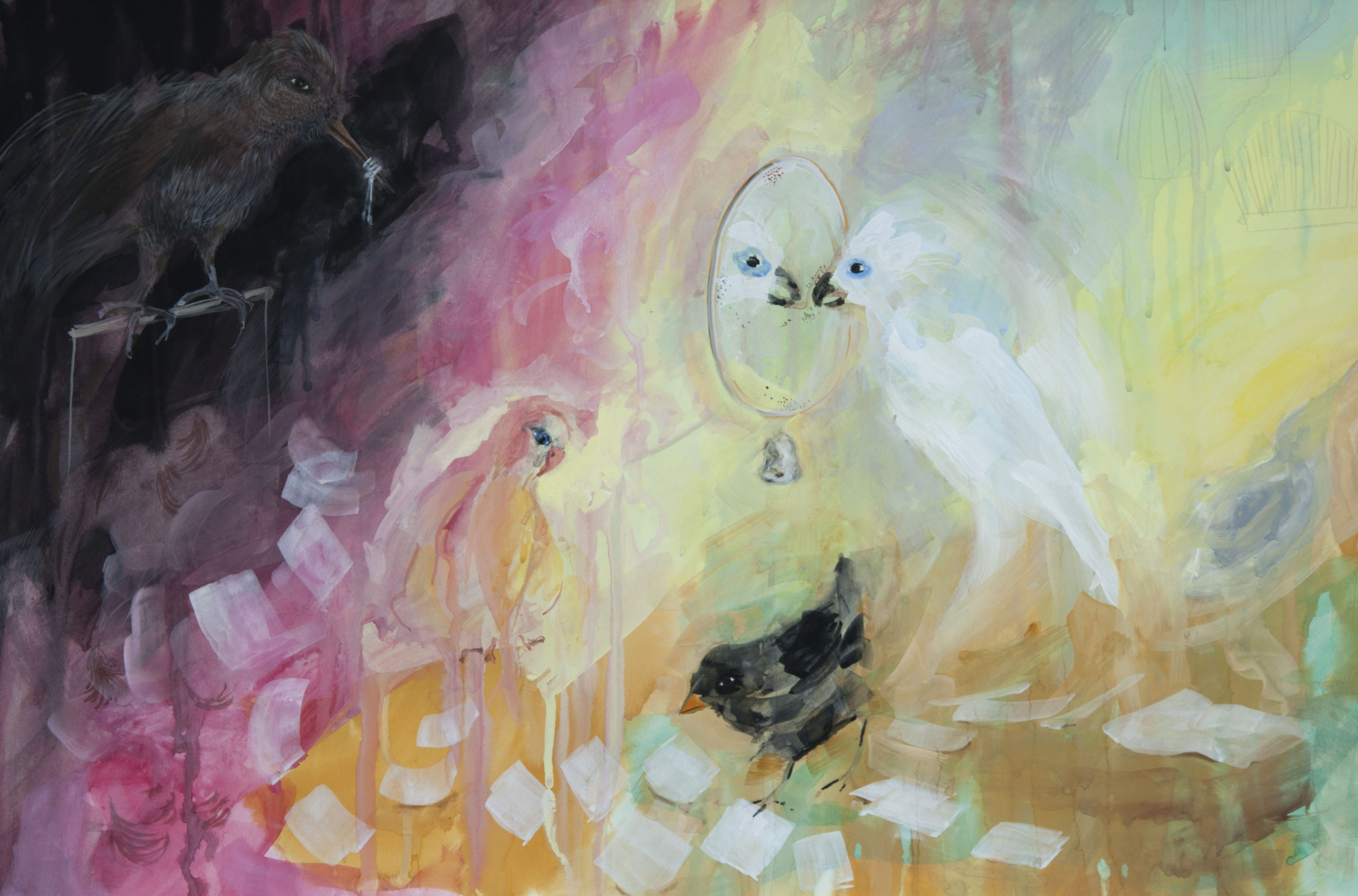
Medina is currently Exhibitions Officer for the Lincolnshire Artists’ Society.
She is also a member of the Nadin Group.
